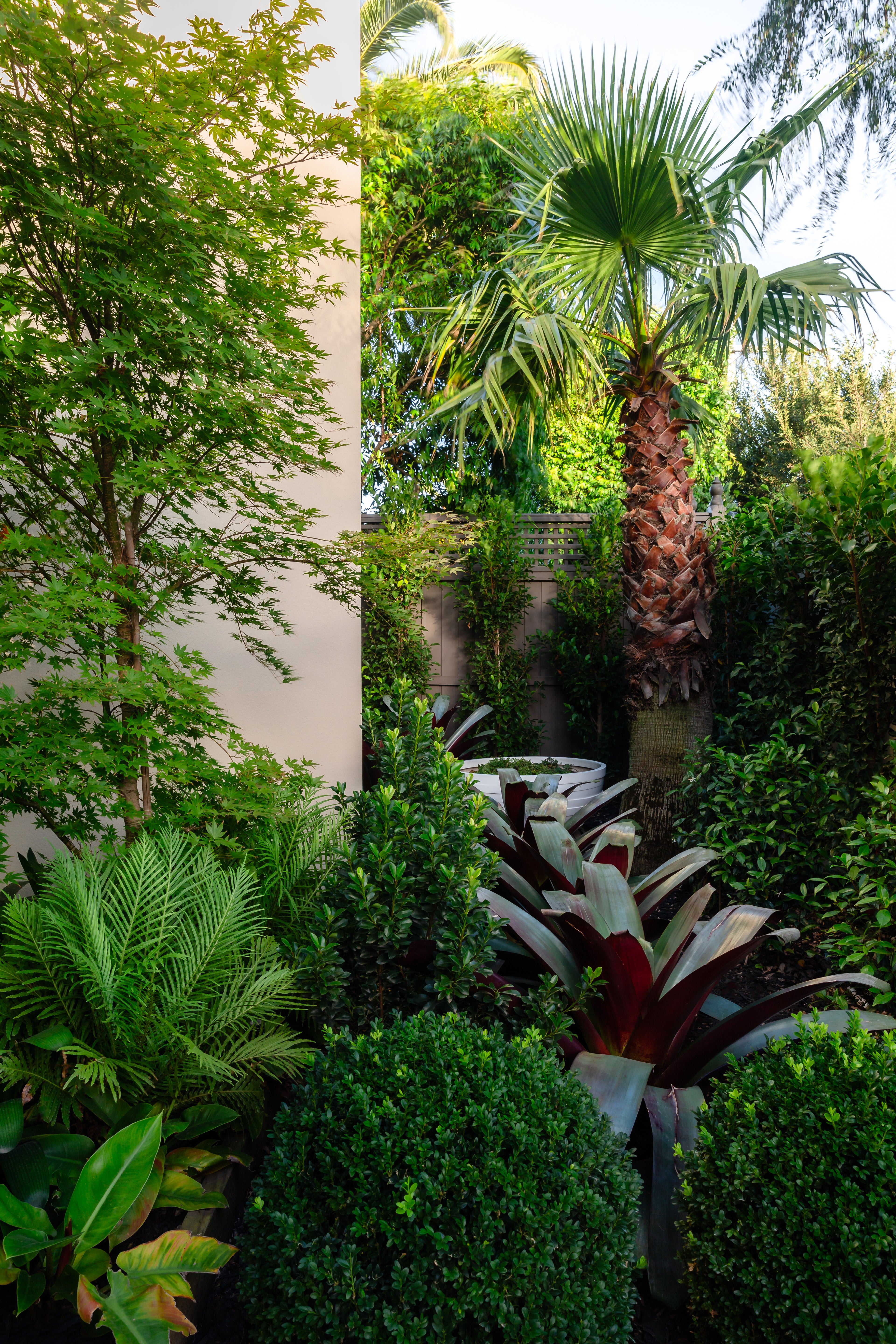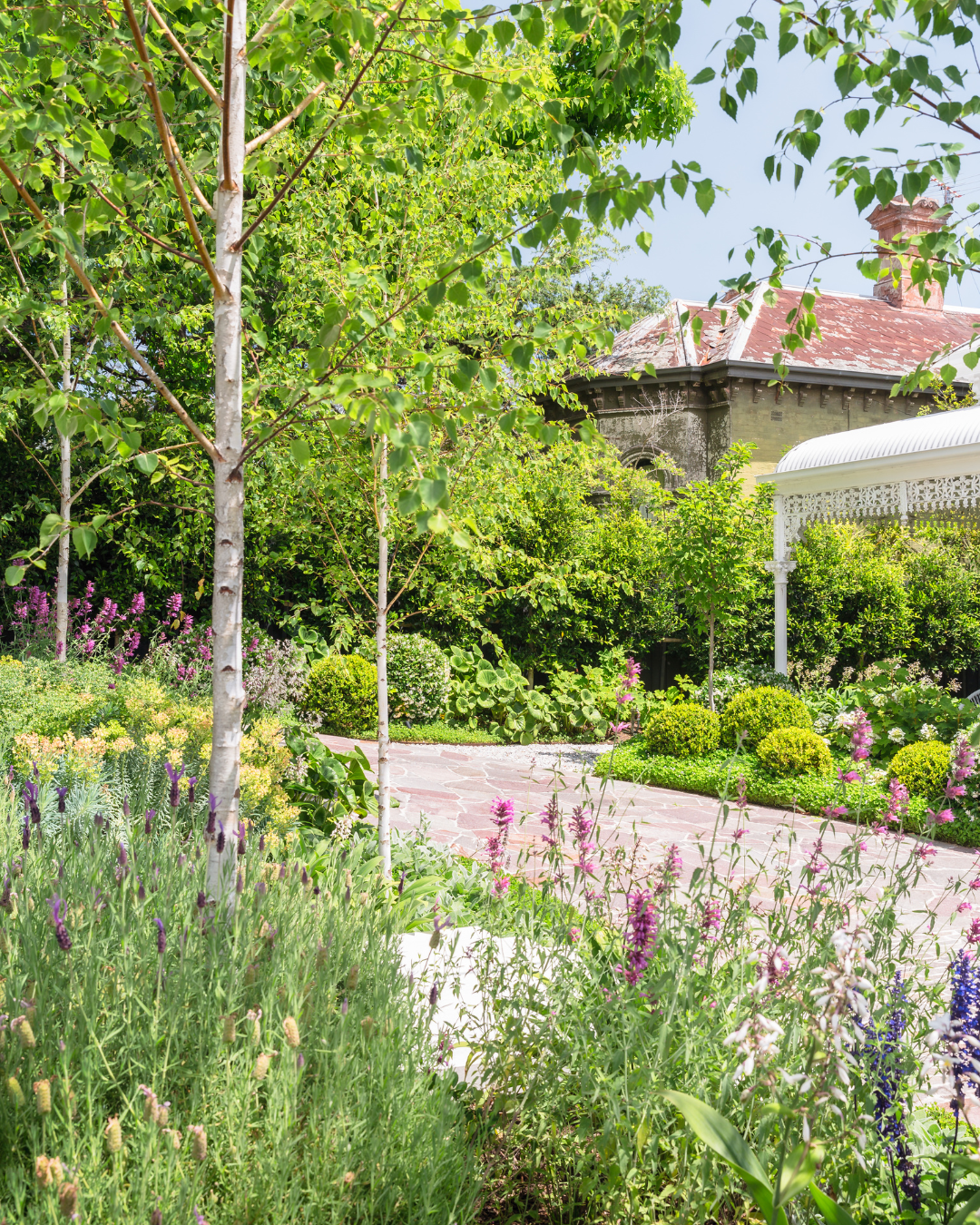Creating a tree-lined walkway in your garden adds a touch of elegance and structure, enhancing the natural beauty of your landscape while creating a captivating entrance or pathway. Choosing the right trees for this purpose is crucial, as their characteristics will define the atmosphere and aesthetics of the space. In this guide, we’ll explore how to design a tree-lined walkway and showcase three exceptional tree species—Pyrus calleryana 'Cleveland Select', Quercus palustris, and Corymbia maculata—each offering unique qualities that make them ideal for creating a refined and inviting path.
Designing a Tree-Lined Pathway: Essential Considerations
Before delving into tree selections, consider a few design fundamentals to ensure your walkway's appeal and functionality:
1. Spacing and Alignment
The distance between the trees will greatly influence the feel of the walkway. For a narrow, intimate pathway, spacing the trees 2.5 to 3 meters apart may be suitable, creating a canopy effect. 4.5 to 6 meters may work better for a broader, more spacious avenue. Ensure the alignment is symmetrical for a formal look, while staggered placement can lend a more relaxed, natural vibe.
2. Tree Size and Growth Pattern
Choose trees that won’t outgrow their space and will provide ample shade without obstructing the path. Slow to moderate growth rates are preferable to avoid excessive maintenance. The selected species should complement the overall garden design and maintain a balanced look as they mature.
3. Consider the Seasons
Opting for species that provide visual interest throughout the year will keep the walkway captivating regardless of the season. Evergreen trees or those with striking autumnal hues can ensure year-round beauty.
Tree Recommendations for a Walkway
Below are detailed suggestions for three outstanding tree species that blend charm, utility, and sophistication into a tree-lined garden walkway.
1. Pyrus calleryana 'Cleveland Select'
Pyrus calleryana 'Cleveland Select', also known as the Cleveland pear, is a deciduous tree renowned for its symmetrical form and vibrant seasonal display. Due to its moderate height and stunning blooms, it’s an excellent choice for lining pathways. The tree's ornamental white flowers appear in spring, providing a dramatic, eye-catching look that transitions into glossy green leaves in summer before giving way to a spectacular array of red and purple hues in autumn.
Key Facts
- Mature Height: 10–12 meters
- Mature Width: 4–6 meters
- Best Uses: Perfect for lining walkways, providing shade, and creating feature areas.
- Leaf Appearance: Oval, glossy green leaves turning brilliant red in autumn.
- Rate of Growth: Moderate
- Tolerates: Wind, drought, and moderate frost
Why Pyrus calleryana 'Cleveland Select' is Perfect for Your Walkway
The Cleveland pear’s conical shape naturally lends itself to creating uniform lines along pathways, offering a formal touch. Its moderate growth rate ensures the walkway is visually appealing without frequent maintenance. Furthermore, the tree's resilience against wind and moderate frost makes it well-suited for various climates, providing a reliable choice for tree-lined entrances and paths.
2. Quercus palustris (Pin Oak)
Quercus palustris, commonly known as the Pin Oak, is a majestic deciduous tree that adds grandeur to any garden. This oak species is characterized by its pyramidal shape, deeply lobed leaves, and the attractive russet-red colors it exhibits in autumn. The Pin Oak’s ability to thrive in moist, well-drained soils makes it ideal for creating walkways near water features or other landscape elements where irrigation is present.
Key Facts
- Mature Height: 18–22 meters
- Mature Width: 7–12 meters
- Best Uses: Ideal for large tree-lined avenues and grand entrances.
- Leaf Appearance: Glossy, dark green leaves that transition to red in autumn.
- Rate of Growth: Moderate to fast
- Tolerates: Wet soils and occasional flooding
Why Quercus palustris is Perfect for Your Walkway
The Quercus palustris can bring a stately look to tree-lined paths, particularly in spacious gardens where a taller tree can make a bold statement. Its adaptability to different soil types and relatively fast growth rate make it an excellent choice for those looking to establish a lush canopy more quickly. Its autumn colors will provide seasonal interest and charm, enhancing the walkway's overall appeal.
3. Corymbia maculata (Spotted Gum)
The Corymbia maculata, or Spotted Gum, is a captivating evergreen tree known for its smooth bark with a distinctive spotted pattern of grey and cream. This tree adds a subtle touch of the exotic to any landscape, while its tall and slender profile makes it suitable for planting along narrow paths. The Corymbia maculata grows well in various soil conditions, displaying resilience in coastal and urban environments.
Key Facts
- Mature Height: 20–25 meters
- Mature Width: 10–15 meters
- Best Uses: Great for creating a natural-looking avenue or screening areas.
- Leaf Appearance: Long, lance-shaped leaves that remain green throughout the year.
- Rate of Growth: Moderate
- Tolerates: Drought, coastal winds, and poor soils
Why Corymbia maculata is Perfect for Your Walkway
The Spotted Gum’s year-round foliage ensures continuous greenery, making it ideal for clients who desire an evergreen appeal. Its elegant bark pattern provides visual interest even during winter when deciduous trees shed their leaves. With its tolerance for poor soil and dry conditions, this tree can thrive with minimal maintenance, allowing for effortless beauty along your garden path.
Planting Tips for a Tree-Lined Walkway
To achieve the best results, follow these guidelines when planting your trees:
- Prepare the Soil: Enrich the soil with organic matter to encourage healthy growth. Ensure the planting area is well-drained, and trees are positioned to receive adequate sunlight.
- Use High-Quality Mulch: Apply a thick layer of mulch around the base of each tree, extending outward by at least 1 meter to retain soil moisture and suppress weeds.
- Water Consistently: Young trees need consistent watering for the first few years. Gradually reduce frequency once the trees are established.
- Prune Regularly: Shape your trees and remove dead or diseased branches to maintain a neat appearance.
FAQs
Q1: How far apart should I plant trees for a walkway?
Plant trees about 2.5 to 3 meters apart for a narrow canopy or 4.5 to 6 meters for a more open look.
Q2: Can these trees be planted in coastal areas?
Corymbia maculata is particularly suitable for coastal conditions due to its tolerance to coastal winds.
Q3: How often should I prune the trees?
Pruning should be done annually to maintain shape and health, especially in the formative years.
Q4: Will these trees provide shade throughout the year?
While Corymbia maculata remains evergreen, Pyrus calleryana 'Cleveland Select' and Quercus palustris are deciduous, offering seasonal shade.
Conclusion
Creating a tree-lined walkway transforms any garden into a refined landscape, providing visual and functional benefits. By carefully selecting tree species such as Pyrus calleryana 'Cleveland Select', Quercus palustris, and Corymbia maculata, you can craft a beautiful pathway that complements your garden's design while ensuring year-round interest. Each tree brings distinct qualities, from seasonal color changes to evergreen foliage, allowing for a tailored approach that aligns with your aesthetic and environmental preferences.
For those looking to bring elegance and structure to their garden, these trees offer a balanced blend of luxury, ease of maintenance, and enduring beauty. Whether it’s the seasonal vibrance of the Cleveland pear, the grandeur of the Pin Oak, or the subtle allure of the Spotted Gum, your tree-lined walkway will be a breathtaking feature for years to come.













